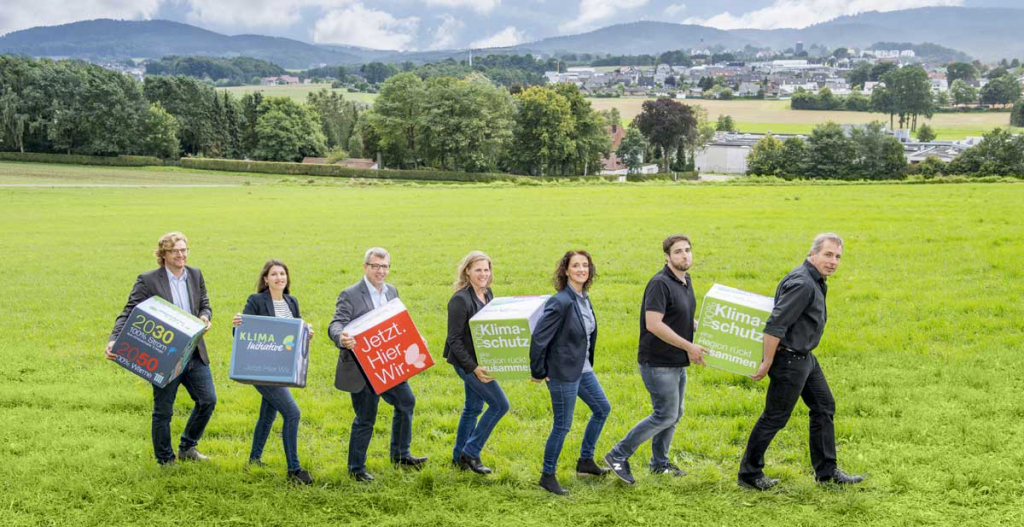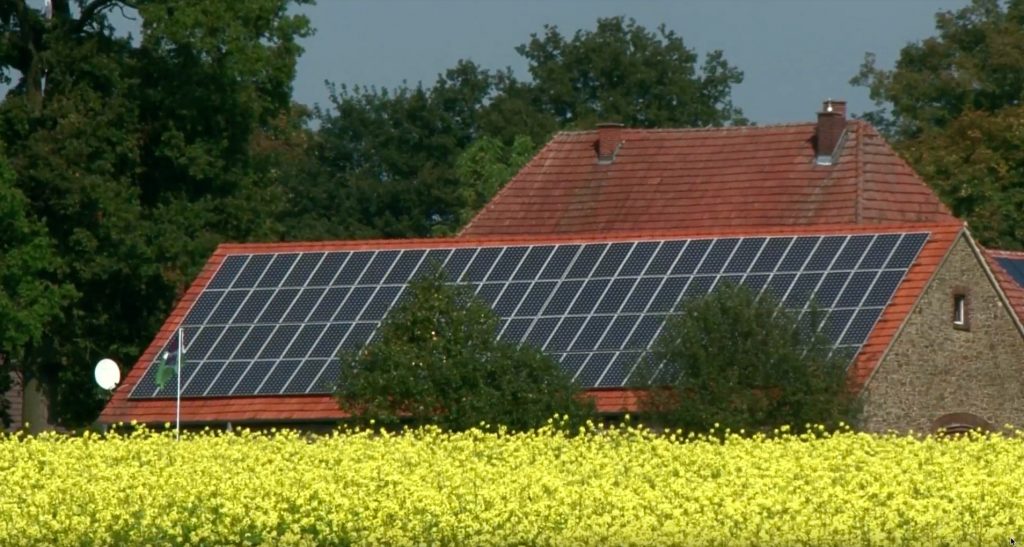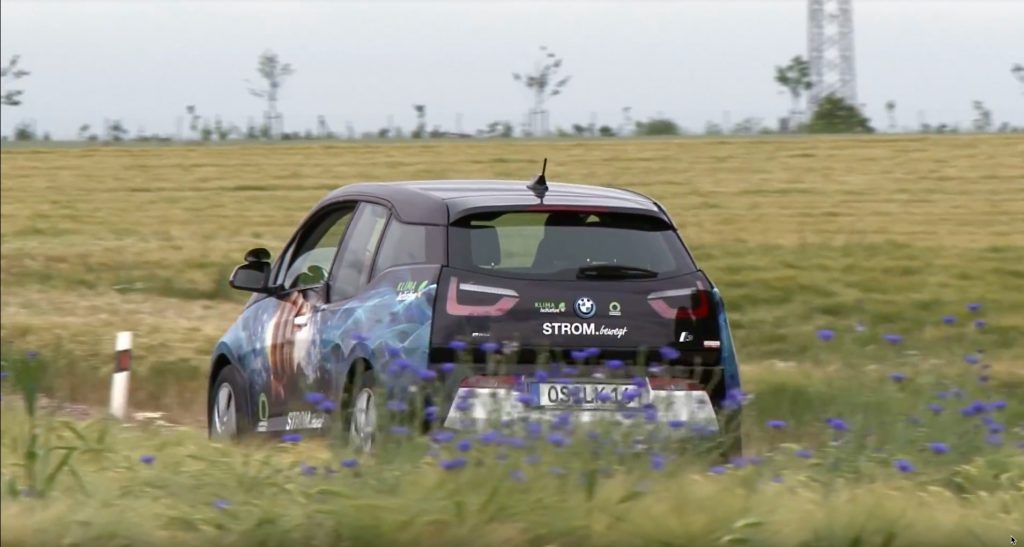By David Dodge and Scott Rollans
The county of Osnabrück in northern Germany produces 80 per cent its electricity from renewable sources, smashing national goals that call for 60 per cent by 2050.
Osnabrück lies just north of Germany’s major coal-mining region, yet it’s helping to lead the country’s national energy transition plan, or Energiewende. The county is made up of 34 municipalities and has a climate change team of seven people.
“In the county of Osnabrück our own goals are to be in 100 per cent renewable energies in electricity [by] 2030 and in heating and warmth [by] 2050,” says Andrea Witte, head of climate change and energy for the county.

Green Energy Futures went to in Germany to see how local communities are responding to Energiewende. Currently, Germany as a whole is using 45 per cent renewable—impressive perhaps, but nothing compared to Osnabrück’s 80 per cent.
To accomplish this feat, Osnabrück county has built 180 wind turbines and has completed 10,000 solar projects, says Witte as he tours us through a local wind farm.

Whereas places like Alberta have barely dabbled in biogas (using organic waste, manure and other raw materials to create methane). We currently have about five biogas projects, including Lethbridge Biogas. Germany already boasts 9,500 biogas plants.
“We have a lot of biogas plants in our area—about 100 of them,” says Witte, adding many Osnabrück farmers have their own plants. Older biogas plants produce electricity, while newer plants also utilize the waste heat, making the process much more efficient.
Renewable electricity is a major step towards reducing greenhouse gas emissions. To achieve its ambitious Energiewende goals, Germany will also need to address emissions from mobility and from heating buildings.

Rise of the electric car?
Germans are car people. The country boasts some of the world’s largest car manufacturers. Volkswagen recently announced that it will produce only electric cars as of 2026. Despite this, electric car sales represent just one per cent of new car sales in Germany—about the same uptake rate as Canada’s.
Norway, in contrast, registered 10,732 electric cars in March 2019 alone, representing record 58 per cent of market share.
Germany has no incentives for electric car sales, and it can be hard to source electric car leases. But, Witte sees change coming. “I think I can read the signs in the companies,” he says. “They want to hold the market, and I think that’s why they made the decision to produce e-cars here. I think the market will tell them what they have to do in the future.”

Meanwhile, Germany may not be as bike nuts as Netherlands, but its (Germany’s) 82 million citizens own 72 million bicycles. The bicycle capital of Germany is Münster—population 500,000, of which 100,000 use a bicycle every day. Bike racks in northern communities like Osnabrück and Rheine can be stuffed by hundreds and sometimes thousands of bikes. “Osnabrück is a student city,” says Witte. “[A bike] is cheap, and you can get as quick as you like from one point to the other.”
Electric bikes are also catching on in Germany, with about 2.5 million in use. In less urban regions, e-bikes might provide a solution for people with longer commutes.
Renewable home heating a bigger nut to crack
Heating buildings sustainably is the next big challenge Witte expects to tackle. “In our region, we do our house heating with oil and with gas today,” he says. “We want to install heating grids.” District heating systems can be fueled with biomass as we saw in Saerbeck, the self-proclaimed Climate Community of the Future or even waste heat as we saw in Venne, where Waffel Meyer, Europe’s largest waffle cone manufacturer is using its waste heat to heat homes in the village.
In Germany, buildings account for 40 per cent of final energy use and 33 per cent of greenhouse gas emissions. Witte hopes new housing developments will incorporate heating grids (district heating), but Witte says state leadership is necessary to renovate more existing buildings to make them energy efficient.
There is a glimmer of hope on the horizon. The German Ministry of Energy has allocated budget to fund a market development team for Energiesprong, a movement that began in the Netherlands. The goal there is to renovate every single building to net-zero by 2050, with funding coming from utility savings. Energiesprong brings together financing, industrialized processes, and a streamlined process. New, insulated facades and roofs are made in a factory and added to existing homes. The installation takes less than a week.
The idea is catching on. There are already 20,000 projects underway in the Netherlands, France and the UK, and Germany. Several Canadian provinces have joined, including B.C., Ontario and, soon, Alberta.

Osnabrück as a template
It was fascinating being on the ground in Osnabrück, and seeing just how successful a determined local initiative can be. The local citizens, and their seven-person climate change team, are showing their country (and the world) that it’s possible to take on incredibly ambitious green-energy targets—and actually exceed them.
Our thanks to Michael Wolters (Rheine), Guido Wermers (Rheine), Guido Wallraven (Saerbeck), Andreas Witte (Osnabrück), Christian Meyer zu Venne (of Waffel Meyer in Venne) and others who toured us around Rheine, Osnabrück, Saerbeck, and Venne in northern Germany.





